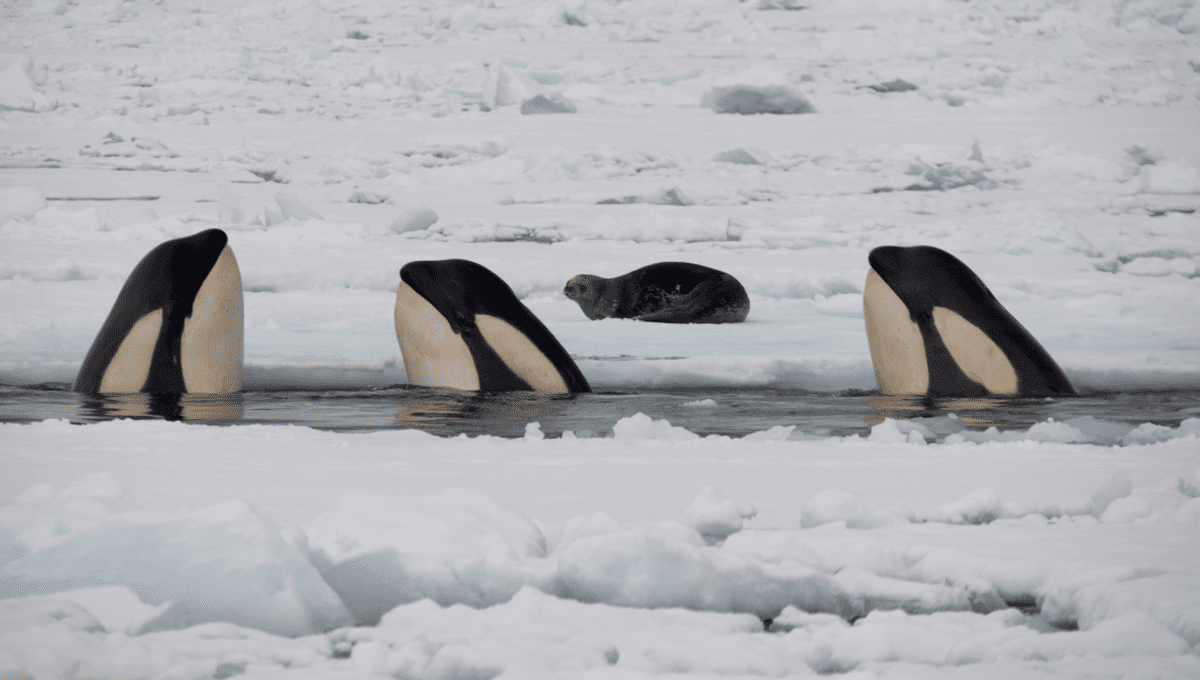
It’s no secret that orca are trained assassins (they’re known as “killer whales” for a reason), but a sequence from the newly released Frozen Planet II serves as a harrowing reminder of just how skilled they are. In it, a synchronized pod can be seen targeting a seal who evidently thought they were safe snoozing atop a giant slab of ice. However, it seems few places are safe when group-hunting Orcinus orca are involved.
The life of a pod of orcas is a perpetual cycle of hunting and feeding. When in search of a meal, they’ll swim around “spy-hopping”, which is when they bob out of the water to get a look at what’s happening up on land.
The sophisticated seeking technique enables them to spot seals that are suitably positioned to become dinner, but it’s expensive work calorie-wise. This means hunting pods of orcas must find a lot of food to keep everyone in the group sufficiently stocked up so that they can go in search of more food, and that’s without taking mating or calf-rearing into consideration.
As a result, once a seal is in a pod of orcas’ sights, they aren’t going to give up easily. Something that’s demonstrated in stunning 4K UHD in Sir David Attenborough and the BBC Natural History Unit’s recent release, Frozen Planet II.
As two orcas lay eyes on a seal, the scouts call in reinforcements with vocalizations. This brings the gang together for a coordinated attack, bringing to mind scenes of velociraptors pack-hunting for pterosaurs in Prehistoric Planet (though some argue we don’t know for sure if they actually hunted like this).
The seal locked into the orcas’ sights seems unperturbed, and who could blame it, sitting upon such an enormous sheet of ice? But alas, it’s not for long.
The orcas work together to produce a sub-surface wave that effectively shatters the seal’s large icy safety float. By breaking the ice into smaller pieces like this, the orca have a much better shot of knocking the seal into the water and securing themselves a meal.
Sinister scenes show the matriarch spy hopping mere meters from the seal. Following her lead, the pod work together to push their prey and its safety raft out to clearer waters where they have a clean shot to wave-wash the seal and send it skidding into the water.
They then surround the poor pinniped with bubbles to disorientate it so that they can safely take it down. The complexity of the attack is remarkable not just for wildlife in general but even among orcas, with only 100 of these animals known to practice these techniques in the wild.
An incredible adaptation to surviving in a world where prey is sparse, and one which sure makes you feel relieved not to have been born a seal.
Source Link: “Velociraptors Of The Sea” Show Off Synchronized Hunting Techniques In Incredible Video